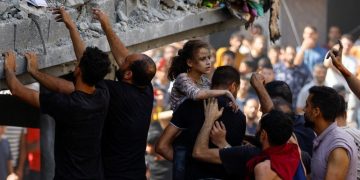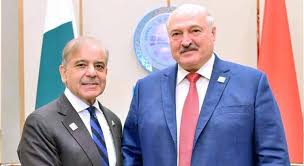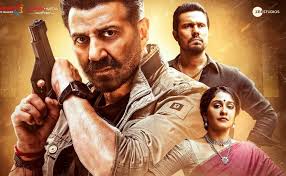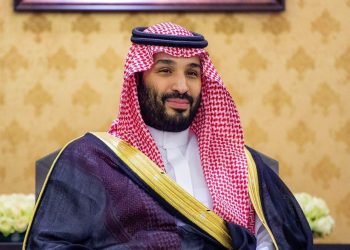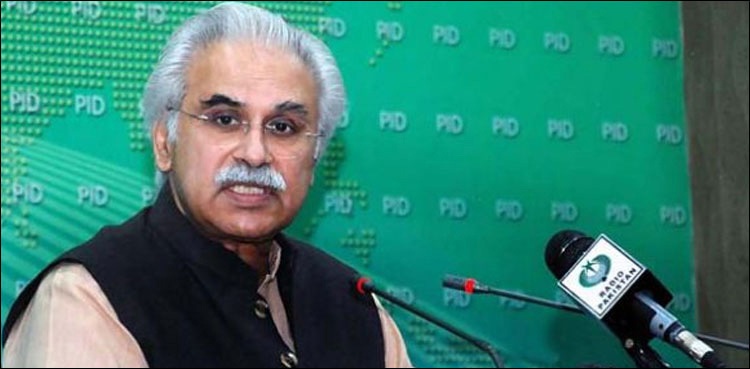A long time ago, during the time of Emperor Xuanzong of Tang, there was a saint named Xuanzang on the quake.

Xuanzang, was a Chinese Buddhist monk, scholar, traveler, and translator who traveled to India in the seventh century and described the interaction between Chinese Buddhism and Indian Buddhism during the reign of Harsha.
During the journey he visited many sacred Buddhist sites in South Asia. He was born in what is now Henan Province on 6 April 602, and from boyhood he took to reading religious books, including the Chinese classics and the writings of ancient sages.
While residing in the city of Luoyang in Henan in Central China, Xuanzang was ordained as a śrāmaṇera (novice monk) at the age of thirteen. Due to the political and social unrest caused by the fall of the Sui dynasty, he went to Chengdu in Sichuan, where he was ordained as a bhikṣu (full monk) at the age of twenty. He later traveled throughout China in search of sacred books of Buddhism. At length, he came to Chang’an, then under the peaceful rule of Emperor Taizong of Tang, where Xuanzang developed the desire to visit India. He knew about Faxian’s visit to India and, like him, was concerned about the incomplete and misinterpreted nature of the Buddhist texts that had reached China.
He became famous for his seventeen-year overland journey to India (including Nalanda Monastery), which is recorded in detail in the classic Chinese text Dà Táng Xīyù Jì (Great Tang Records on the Western Regions), which in turn provided the inspiration for the novel Journey to the West written by Wu Cheng’en during the Ming dynasty, around nine centuries after Xuanzang’s death.
In 627, Xuanzang reportedly had a dream that convinced him to journey to India. Tang China and the Göktürks were at war at the time and Emperor Taizong of Tang had prohibited foreign travel. Xuanzang persuaded some Buddhist guards at Yumen Pass and slipped out of the empire through Liangzhou (Gansu) and Qinghai in 629. He subsequently traveled across the Gobi Desert to Kumul (modern Hami City), thence following the Tian Shan westward.
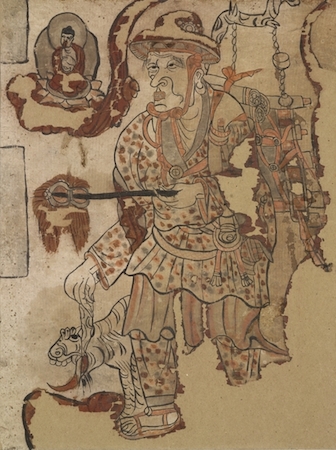
He arrived in Turpan in 630. Here he met the king of Turpan, a Buddhist who equipped him further for his travels with letters of introduction and valuables to serve as funds. The hottest mountain in China, the Flaming Mountains, is located in Turpan and was depicted in the Journey to the West.
Moving further westward, Xuanzang escaped robbers to reach Karasahr, then toured the non-Mahayana monasteries of Kucha. Further west he passed Aksu before turning northwest to cross the Tian Shan’s Bedel Pass into modern Kyrgyzstan. He skirted Issyk Kul before visiting Tokmak on its northwest, and met the great Khagan of the Göktürks, whose relationship to the Tang emperor was friendly at the time. After a feast, Xuanzang continued west then southwest to Tashkent, capital of modern Uzbekistan. From here, he crossed the desert further west to Samarkand. In Samarkand, which was under Persian influence, the party came across some abandoned Buddhist temples and Xuanzang impressed the local king with his preaching. Setting out again to the south, Xuanzang crossed a spur of the Pamirs and passed through the famous Iron Gates. Continuing southward, he reached the Amu Darya and Termez, where he encountered a community of more than a thousand Buddhist monks.
Further east he passed through Kunduz, where he stayed for some time to witness the funeral rites of Prince Tardu, who had been poisoned. Here he met the monk Dharmasimha, and on the advice of the late Tardu made the trip westward to Balkh (modern Afghanistan), to see the Buddhist sites and relics, especially the Nava Vihara, which he described as the westernmost vihara (monastery) in the world. Here Xuanzang also found over 3,000 non-Mahayana monks, including Prajnakara (般若羯羅 or 慧性), a monk with whom Xuanzang studied early Buddhist scriptures. He acquired the important text of the Mahāvibhāṣa (Chinese: 大毗婆沙論) here, which he later translated into Chinese.
Prajñakara then accompanied the party southward to Bamyan, where Xuanzang met the king and saw tens of non-Mahayana monasteries, in addition to the two large Buddhas of Bamiyan carved out of the rockface. The party then resumed their travel eastward, crossing the Shibar Pass and descending to the regional capital of Kapisi (about 60 kilometres (37 mi) north of modern Kabul), which sported over 100 monasteries and 6000 monks, mostly Mahayana. This was part of the fabled old land of Gandhara. Xuanzang took part in a religious debate here and demonstrated his knowledge of many Buddhist schools. He pushed on to Adinapur (later named Jalalabad) and Laghman. The year was 630.
Xuanzang left Adinapur, which had few Buddhist monks, but many stupas and monasteries. His travels included passing through Hunza and the Khyber Pass to the east, reaching the former capital of Gandhara, Purushapura (Peshawar), on the other side. Peshawar was nothing compared to its former glory, and Buddhism was declining in the region. Xuanzang visited a number of stupas around Peshawar, notably the Kanishka stupa. This stupa was built just southeast of Peshawar, by a former king of the city. In 1908, it was rediscovered by D.B. Spooner with the help of Xuanzang’s account.
Xuanzang left Peshawar and traveled northeast to the Swat Valley. Reaching Oḍḍiyāna, he found 1,400-year-old monasteries, that had previously supported 18,000 monks. The remnant monks were of the Mahayana school. Xuanzang continued northward and into the Buner Valley, before doubling back via Shahbaz Garhi to cross the Indus river at Hund. He visited Taxila which was desolate and half-ruined, and found most of its sangharamas (temples) still ruined and desolate with the state of having become a dependency of Kashmir, with the local leaders fighting amongst themselves for power. Only a few monks remained there. He noted that it had some time previously been a subject of the Kingdom of Kapisa. He went to Kashmir in 631 where he met a talented monk, Samghayasas (僧伽耶舍), and studied there. In Kashmir, he found himself in another center of Buddhist culture and describes that there were over 100 monasteries and over 5,000 monks in the area. Between 632 and early 633, he studied with various monks, including 14 months with Vinītaprabha (毘膩多缽臘婆 or 調伏光), 4 months with Candravarman (旃達羅伐摩 or 月胃), and “a winter and half a spring” with Jayagupta (闍耶毱多). During this time, Xuanzang wrote about the Fourth Buddhist council that took place nearby, ca. 100 AD, under the order of King Kanishka of Kushana. He visited Chiniot and Lahore as well and provided the earliest writings available on the ancient cities. In 634, Xuanzang arrived in Matipura (秣底補羅), known as Mandawar today.
Henan Province, the birthplace of Xuanzang
In 632 AD, he went to Kasur, and in 634, he went east to Jalandhar in eastern Punjab, before climbing up to visit predominantly non-Mahayana monasteries in the Kulu valley and turning southward again to Bairat and then Mathura, on the Yamuna River. Mathura had 2,000 monks of both major Buddhist branches, despite being Hindu-dominated. Xuanzang traveled up the river to Shrughna, also mentioned in the works of Udyotakara, before crossing eastward to Matipura, where he arrived in 635, having crossed the river Ganges. At Matipura Monastery, Xuanzang studied under Mitrasena.[19] From here, he headed south to Sankasya (Kapitha, then onward to Kannauj), the grand capital of the Empire of Harsha under the northern Indian emperor Harsha. It is believed he also visited Govishan, present-day Kashipur in the Harsha era, in 636; Xuanzang encountered 100 monasteries of 10,000 monks (both Mahayana and non-Mahayana), and was impressed by the king’s patronage of both scholarship and Buddhism. Xuanzang spent time in the city studying early Buddhist scriptures, before setting off eastward again for Ayodhya (Saketa), the homeland of the Yogacara school. Xuanzang now moved south to Kausambi (Kosam), where he had a copy made from an important local image of the Buddha.
Xuanzang now returned northward to Shravasti Bahraich, traveled through Terai in the southern part of modern Nepal (here he found deserted Buddhist monasteries) and thence to Kapilavastu, his last stop before Lumbini, the birthplace of Buddha.
Xuan Zang, Dunhuang cave, 9th century
In 637, Xuanzang set out from Lumbini to Kusinagara, the site of Buddha’s death, before heading southwest to the deer park at Sarnath where Buddha gave his first sermon, and where Xuanzang found 1,500 resident monks. Travelling eastward, at first via Varanasi, Xuanzang reached Vaisali, Pataliputra (Patna) and Bodh Gaya. He was then accompanied by local monks to Nalanda, the greatest Indian university of the Indian state of Bihar, where he spent at least the next two years, He visited Champa Monastery, Bhagalpur. He was in the company of several thousand scholar-monks, whom he praised. Xuanzang studied logic, grammar, Sanskrit, and the Yogacara school of Buddhism during his time at Nalanda. René Grousset notes that it was at Nalanda (where an “azure pool winds around the monasteries, adorned with the full-blown cups of the blue lotus; the dazzling red flowers of the lovely kanaka hang here and there, and outside groves of mango trees offer the inhabitants their dense and protective shade”) that Xuanzang met the venerable Silabhadra, the monastery’s superior.[23] Silabhadra had dreamt of Xuanzang’s arrival and that it would help spread far and wide the Holy Law.[24] Grousset writes: “The Chinese pilgrim had finally found the omniscient master, the incomparable metaphysician who was to make known to him the ultimate secrets of the idealist systems.” The founders of Mahayana idealism, Asanga and Vasubandhu, trained Dignaga, who trained Dharmapala, and Dharmapala had in turn trained Silabhadra. Silabhadra was thus in a position to make available to the Sino-Japanese world the entire heritage of Buddhist idealism, and the Cheng Weishi Lun, Xuanzang’s great philosophical treatise, is none other than the Summa of this doctrine, “the fruit of seven centuries of Indian Buddhist thought.”
From Nalanda, Xuanzang traveled through several kingdoms, including Pundranagara, to the capital of Pundravardhana, identified with modern Mahasthangarh, in present-day Bangladesh. There Xuanzang found 20 monasteries with over 3,000 monks studying both the Hinayana and the Mahayana. One of them was the Vāśibhã Monastery (Po Shi Po), where he found over 700 Mahayana monks from all over East India. He also visited Somapura Mahavihara at Paharpur in the district of Naogaon, in modern-day Bangladesh.
Xuanzang turned southward and traveled to Andhradesa to visit the Viharas at Amaravati and Nagarjunakonda. He stayed at Amaravati and studied the ‘Abhidhammapitakam’ texts. He observed that there were many Viharas at Amaravati and some of them were deserted. He later proceeded to Kanchi, the imperial capital of Pallavas, and a strong center of Buddhism. He continued traveling to Nasik, Ajanta, Malwa; from there he went to Multan and Pravata before returning to Nalanda again.
At the invitation of Assamese king Kumar Bhaskar Varman, he went east to the ancient city of Pragjyotishpura in the kingdom of Kamarupa after crossing the Karatoya and spent three months in the region. Before going to Kamarupa he visited Sylhet, what is now a modern city of Bangladesh. He gives a detailed account of the culture and people of Sylhet. Later, the king escorted Xuanzang back to the Kannauj at the request of the king Harshavardhana, who was an ally of Kumar Bhaskar Varman, to attend a great Buddhist Assembly there which was attended by both of the kings as well as several other kings from neighboring kingdoms, Buddhist monks, Brahmans, and Jains. King Harsha invited Xuanjang to Kumbh Mela in Prayag where he witnessed king Harsha’s generous distribution of gifts to the poor.
After visiting Prayag he returned to Kannauj where he was given a grand farewell by king Harsha. Traveling through the Khyber Pass of the Hindu Kush, Xuanzang passed through Kashgar, Khotan, and Dunhuang on his way back to China. He arrived in the capital, Chang’an, on the seventh day of the first month of 645, 16 years after he left Chinese territory, and a great procession celebrated his return.

